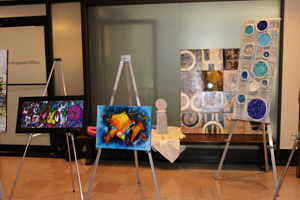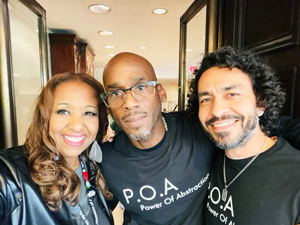
By Asia Nail
The Truth Reporter
Stepping into an art museum is like entering a cultural time capsule, where each exhibit becomes a portal to a different era or emotion.
Then we have the grand gallery of the abstract art form, where each perspective contributes to the rich mosaic of interpretation, transforming museums into realms where every observer becomes an explorer of the sublime.
In a social media post, Toledo Museum of Art’s Director of Belonging & Community Engagement said, “How it starts is how it finishes…
And it started with a bang as members of The Power of Abstraction, a group of abstract expressionists from Detroit, visited the Toledo Museum of Art (TMA) and the 419 for two days of amazing fellowship, Museum touring, a showcase of their artwork and the stories associated and plenty of unforgettable bonding.”
Rhonda Sewell, whose multi-faceted role includes helping to reimagine TMA’s approach to community outreach, was selected several years ago as the Toledo Museum of Art’s first Director of Belonging & Community Engagement, a historic achievement.
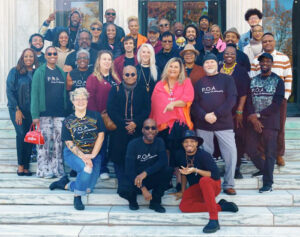 Sewell’s account of The Power of Abstraction 313and419unite museum event on Halloween weekend, painted a vivid picture of a vibrant cultural exchange between Toledo and Detroit.
Sewell’s account of The Power of Abstraction 313and419unite museum event on Halloween weekend, painted a vivid picture of a vibrant cultural exchange between Toledo and Detroit.
“This event not only celebrated abstract art, it also strengthened the bonds between our two cities,” shared Director Sewell.
The Toledo Museum of Art brought together members of The Power of Abstraction, a group of artists from Detroit and TMA’s own 419 participants for two days of some pretty dynamic creative interaction.
“Abstract art can be enigmatic, and understanding the stories behind the artwork provides context and deeper meaning for viewers,” explained Geno Harris, Power of Abstraction founder.
Collaboration between Toledo and Detroit, emphasizes the shared commitment to art and artists, while fostering a sense of belonging both areas can share. It highlights the idea that art knows no boundaries, transcending geographical limits to bring people together. This kind of collaboration encourages the exchange of ideas, perspectives, and artistic practices, enriching both our cities culturally.
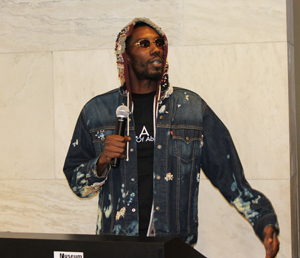
“This collective emphasizes that art can be a unifying force, fostering a sense of community beyond the constraints of location,” explained Sewell.
The event kicked off with an abstract art showcase at TMA, providing a platform for artists to share their work and the stories behind it. The power of storytelling through art was evident throughout the event.
This type of TMA event and the sharing of artists’ stories, played a pivotal role in humanizing the arts for everyone.
“The common thread that many artists say is: I’m not a good speaker,” said Harris and his professional partner, Javier Andres Gonzalez.
“Our abstract art group meetings in Detroit are run like artist talks. We encourage artists to bring in their work and just start talking about it and their process. The more we practice sharing our thoughts with an audience, the more we will connect to our consumers,” Harris added.
“We explain to our artists that their art sitting on the wall will not speak for them in all ways,” said Harris. “Art also needs the artist to represent it. Something this group helps us do is build connections with our community.”
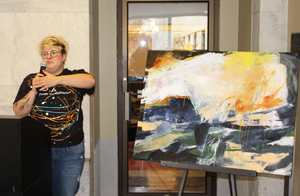
The steps of TMA served as the backdrop for a group photo, becoming a symbol of shared tradition and community. Choosing that location for a group photo is a powerful gesture that connects the event to the museum’s historical and cultural significance.
“The iconic TMA steps also represent a visual symbol of unity, tradition, and shared experiences, serving as a testament to the role of cultural institutions in building and preserving community heritage,” Sewell explained to participants.
Given Toledo’s moniker as the Glass City, a glass blowing demonstration in the TMA Glass Pavilion fit the bill for the next display of the city’s artistic heritage and expertise. Toledoans are known to celebrate both local artistry and heritage traditionally within the museum’s walls.
“We always strive to emphasize the importance of preserving and showcasing traditional crafts and skills at TMA,” said Sewell.
Demonstrations such as glass blowing also provide a hands-on and interactive experience for attendees, connecting them directly with the artistic process and the community’s history. It underscores the idea that art is not just about the finished product but also the craftsmanship and creativity behind it.
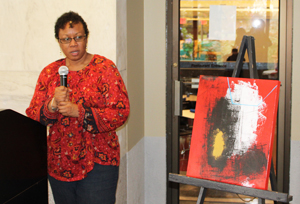
Participants then had the opportunity to explore TMA’s historic galleries and exhibitions, deepening their connection with the museum’s rich artistic heritage. TMA has historically done an exemplary job showcasing the importance of preserving and promoting cultural and artistic history. Museums, like TMA, act as repositories of human creativity, and such tours allow participants to connect with the past, gaining a deeper understanding of how art has evolved over time. It also reinforces the idea that art is a continuum, and each generation adds to the collective cultural narrative.
In the hallowed halls of the art museum, if you feel as though you are an informed viewer, then that’s akin to possessing a key that unlocks hidden chambers of meaning. It’s like donning glasses that reveal the intricate brushstrokes and whispered narratives embedded in each piece of abstract art. As an informed observer, you become a skilled navigator, traversing the canvas like a seasoned explorer decoding a cryptic map.
On the other hand, if you feel you are an uninformed gazer in the museum, that’s akin to a stroll through an enchanted forest, where every artwork is a mysterious creature waiting to be discovered. Each brushstroke becomes a trail to follow, and colors evoke emotions like the changing hues of an elusive sunset. You, the observer, much like an adventurer, rely on intuition and emotion to navigate this abstract landscape.
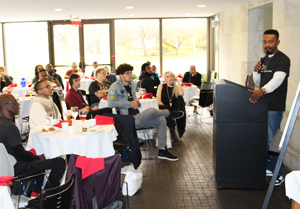
For the unaware museum-goer, the artworks may resemble a foreign language, a collection of symbols and shapes without a decipherable code. It’s like wandering through a dream, where the beauty may be felt but the significance remains elusive. Metaphorically, the informed art buyer becomes a collector of rare gems, appreciating the abstract pieces as precious stones with unique facets. Yet, the uninformed buyer, in contrast, might resemble a gardener picking flowers based on instinct, drawn to colors and forms without analyzing the botanical intricacies. Pretty cool.
In the early evening hours, attendees were given a warm reception at TolHouse, where Detroit artists were welcomed by members of Toledo City Council and vocalist Ramona Collins, adding to the sense of community.
The event extended to a visit to River House Arts, hosted by gallery owner Paula Baldoni, a local gem and full-service gallery located in the historic Secor Building in downtown Toledo.
Their exhibitions are always changing and always free and open to the public. (Gallery Hours are by appointment.)
The final send-off brunch and ceremony at Brim House, was where farewells were bid and the experiences of the gathering were celebrated. This final component of the event ensured that attendees parted on a positive note and that everyone made it home safely.
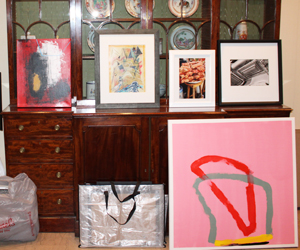 “Never forget we’re still allowed to have child-like fun as adults, too,” says Director Sewell. “Our goal is to always foster a global dialogue through art.”
“Never forget we’re still allowed to have child-like fun as adults, too,” says Director Sewell. “Our goal is to always foster a global dialogue through art.”
Our Toledo Museum of Art provides inclusion of all cultures and age groups within its museum galleries and their various exhibitions are paramount. Museum staff, curators, historians and artists alike transform our local and city spaces into vibrant crossroads of perspectives and art.
Imagine the museum as a mosaic, one with each culture contributing a unique piece to the overall narrative. The collective importance lies not just in representation but also in the celebration of the community’s diverse voices, ensuring that every observer, regardless of background, finds a reflection of their own story in the art on display.
An Art Museum should be a place where the elderly walk hand in hand with the young, where cultures intertwine, and where the richness of the human experience is celebrated.
The organizers of The Power of Abstraction, with the help of the local artistic community, are planning a joint abstract art exhibit in Toledo in the near future.
Follow TMA at www.toledomuseum.org

